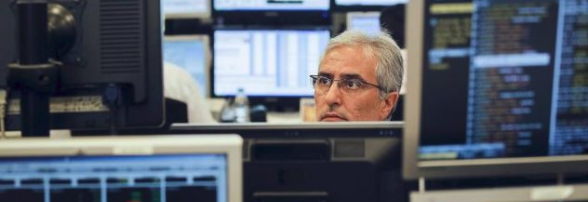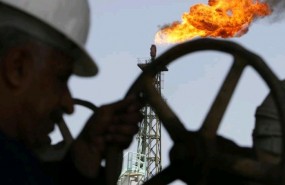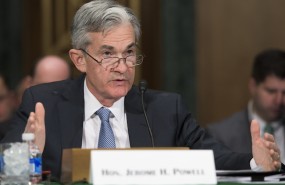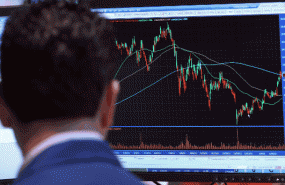- Even so, there is a generalized feeling that 'the worst' will not happen in any of the cases

Investors remain cautious as they wait for what may happen after the growing tension between the United States and Russia over Syria. The Ibex 35 ends the session with a slight gain of 0.12% (9,747 points), and remains behind compared to the gains of the rest of the European indices.
- 11.154,600
- 1,56%
Sabadell led the gains in this session, rising 4.12%. The entity has announced the sale of two property portfolios valued at around 8,000 million euros to meet its target set in its strategic plan 2018-2020: reduce its volume of unproductive assets by 2,000 million annually.
Also in green the gains of Mapfre (+ 1.73%) or ArcelorMittal (+ 1.37%) are worthy of note.
One of the protagonists of the session was IAG. The group of airlines has announced the purchase of 4.61% of Norwegian and is considering launching an OPA. IAG ended the session with a fall of 0.45%. After hearing the news, all European airlines, which were falling under pressure from high oil prices, have turned around.
On the other hand, Ferrovial has been the most bearish value, leaving 1.56%, followed by Aena (-1.14%) and Inditex (-0.94%).
In the main board Amper has shot up more than 27% after announcing that it expects to earn 50 times more in 2020 after presenting its strategic plan.
UNITED STATES, RUSSIA AND CHINA
In any case, both in terms of the crisis with Russia and the trade crisis with China, or the crisis that has existed and continues to exist between the United States and North Korea, there is a certain feeling that all this can not end in the worst way A feeling that is based, among other things, on the fact that, if the commercial crisis with China ended in the worst way, or if this same thing happened with Russia or with North Korea, the consequences would be so catastrophic that 'nobody' bet that this will happen. Although this feeling of substance dominates, the truth is that investors are very aware of each step in each of these conflicting processes, in case the unpredictable happens or if things improve.
And in the midst of all this situation, the 'economic life' continues. The last minutes of the Federal Reserve (Fed) published on Wednesday show that the US central bank is considering, for the first time since the Great Recession, a change of bias in its monetary policy: from accommodation to "neutral" or "restrictive" " "Most members were optimistic that the increase in GDP and inflation would generate further rate hikes in the coming months (...). There was no suggestion that Fed members see any possibility of deceleration in the coming months, although it is recognized that a commercial war would cause a downside risk, "says Michael Hewson, director of analysis at CMC Markets in London.
Hewson adds that, with the whole question of geopolitical tension, economic data is falling into the background and highlights that this week have seen references that point to some weakness in some parts of Europe. "The economic information yesterday in the UK followed the weak reference of industrial production in Germany that we saw last week, well below expectations, which caused some nervousness about the convenience of a possible rate hikes by the Bank from England next month. "
It should be noted that the geopolitical tension in the Middle East has caused the escalation of crude oil (the Brent barrel has risen to 72 dollars, levels not seen since 2014). At the end of the Spanish market, it lost 0.82% to 71,247 dollars, while the reference West Texas registered drops of 0.58% to 66.43 dollars.
PROCEEDINGS OF THE BCE
Finally, regarding the data of the day, the industrial production of the Euro Zone has fallen to 2.9% compared to the previous 3.7% and the estimate of 3.8%. The proceedings of the last monetary policy meeting of the European Central Bank (ECB) have also been published, which have left no room for surprise. They reflect that the central bank estimates that a "broad degree of accommodative monetary policy" is still necessary to sustain the economic expansion of the eurozone and the evolution of inflation.
The entity also confirms the change of guidance to the market on March 8 and has withdrawn the reference to increase debt purchases if necessary, due to greater confidence that the prices will reach its objective in the medium term, slightly lower to 2%.
TECHNICAL ANALYSIS
According to José María Rodríguez, technical analyst at 'Bolsamanía', the Ibex is once again behind the rest of the European indexes, with profits close to 1% on average. The analyst explains that in the short term the index has a resistance at 9,810 points, and the most important support is in the bullish gap of 9,950 points. "And within this price range, we do not have the same quote in the 9,600 as in the 9,800 points because we will not have signs of any kind," he says. Of course, he considers that, above the 9,810 "we do not rule out that the rebound has continuity towards what is a resistance of greater draft in the 9,940 points". Above it, the weekly bearish hollow of early February, at 10,200-10,210 points.
Meanwhile, the two major European indexes (Dax and Euro Stoxx 50) continue to close at significant resistance levels, such as the 12,480-12,500 points in the future of the Dax and the 3,390 points in the future of the European index. However, on Wall Street, Rodriguez explains that the S & P500 and the Dow Jones are facing the first short-term resistances, the 2,672 and the 24,622 points, respectively. "Above these we could continue to bet on a continuity of the increases on the other side of the Atlantic and, therefore, here in Europe."
Noticias relacionadas

El petróleo Brent supera los 72 dólares y marca máximos desde 2014

El príncipe heredero de Arabia Saudí llega a España para firmar contratos por 2.000 millones de euros

La Fed se plantea por primera vez desde la Gran Recesión un cambio de sesgo en su política monetaria


